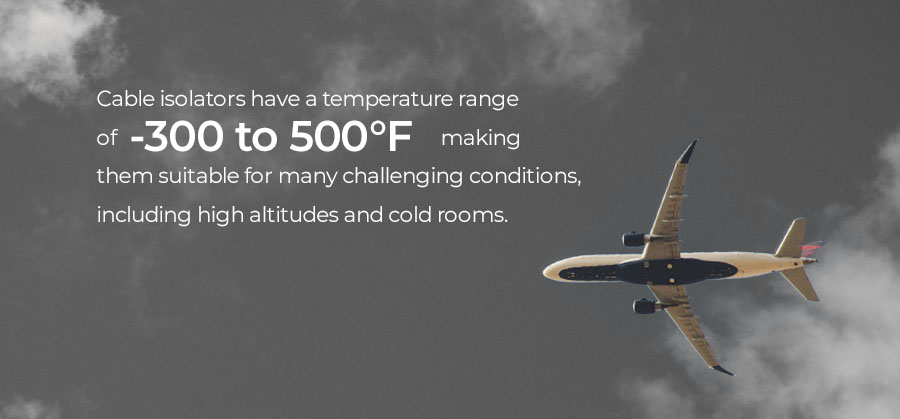Protecting Sensitive Equipment From Vibration and Shock

Shielding sensitive electronic equipment from damaging vibrations is paramount in many industries. The equipment can malfunction or fail without adequate protection, potentially putting people at risk. It can also degrade much faster, resulting in additional maintenance and replacement costs and associated downtime. Excessive vibration may damage electronic boards and components, causing them to loosen or collide.
Higher vibration levels are inevitable in specific applications, such as aerospace, defense and transportation. When it’s not possible to avoid vibration and shock, you can take precautions and provide high-quality protection for all sensitive equipment.
What Constitutes Shock and Vibration?
Let’s begin with a sensitive equipment definition — devices, instruments and machinery that are highly susceptible to damage when exposed to even small levels of shock and vibration. These could include precision measuring tools, electronic devices, scientific instruments and aerospace components. In many applications, this equipment must perform in challenging conditions.
Shock is a transient phenomenon consisting of a short duration energy impulse transmitting to a system with considerable acceleration in a short period. It can contain significant energy and a sudden change in velocity. In contrast, vibration is lower in amplitude, requiring an object to oscillate around a point of equilibrium. Vibration and shock are often present simultaneously — a sudden burst of energy causes significant movement, disrupting an object beyond the original impact.
Transportation is one of many contexts in which shock or vibration can affect sensitive equipment performance. Over time on the journey during transport, these phenomena will change a tool’s ability to function or lead to complete failure.
Standardized Vibration Criteria
The environment significantly affects equipment performance within the immediate area. Vibration control requirements become increasingly stringent as demands for precision and accuracy increase.
Eric Ungar and Colin Gordon developed the first set of formalized vibration criteria for sensitive equipment in the 1980s. These included four levels — A through D. The Institute for Environmental Sciences and Technology standardized the criteria in 1994, adding a fifth level — VC-E.
We can express vibrations as displacement, velocity or acceleration. Measuring them in the vertical and two horizontal directions creates VC curves, which define the maximum level or amplitude at which equipment can perform.
Vibration Protection of Sensitive Electronic Equipment
Since shock and vibrations are unavoidable in many settings, sensitive equipment rigging and other protection methods aim to mitigate their effects, improving longevity and reliability.
Many industries and applications use wire rope isolators to minimize vibration and shock during sensitive equipment transportation. Their ability to reduce damage has made them an ideal protective strategy.
Using Wire Rope Isolators
Vibration isolation is the reduction in vibration transmitted to an object. Wire rope isolators work by reducing the system’s natural frequency. These devices provide significant shock and vibration protection due to their high damping properties to absorb unwanted energy.
These isolators stabilize sensitive equipment within the source of shock or vibration. When the surface of a WRI receives a shock, the isolator redistributes that force into a longer-duration acceleration, reducing the strain the equipment experiences. In other words, the overall shock energy transferred to the equipment is significantly reduced.
Isolators often combine an elastic element, like a spring, with a damper. WRIs comprise helical steel cables, which themselves contain hundreds of individual wires guided through robust retaining bars. All of the wires work together to provide the elasticity of the cable, and their movement relative to each other creates damping through friction. This efficient design combination enables WRIs to deliver superior shock and vibration isolation for sensitive equipment in challenging environments, such as military, commercial and industrial operations. They perform critical functions like protecting sensitive drilling equipment and maintaining electronic functioning in advanced computer systems.
The Benefits of Wire Rope Isolators
WRIs have proven effective in mitigating the effects of shock and vibration in various settings, making them the preferred choice for protecting sensitive and expensive equipment.
Here are some of the many benefits of using WRIs.

- Increased equipment longevity: When you expose sensitive equipment to shock and vibration, the effects compound, adversely affecting performance and leading to eventual failure. An isolation system reduces stress on the equipment, extending its life span.
- Higher temperature range: Cable isolators have a temperature range of minus 300 to 500 degrees Fahrenheit, making them suitable for many challenging conditions, including high altitudes and cold rooms.
- Improved equipment performance: Sensitive equipment can experience performance changes due to the slightest shock or vibrational changes. WRIs protect it from these vibrations, improving its overall performance.
- High environmental resistance: Many systems must perform in environments with hazards other than vibrations. WRIs can withstand various substances, including oils, solvents and salt spray, maintaining their functionality in the presence of these potential contaminants.
- Multi-axis capability: Cable isolators are multi-axis mounts, so you can install them in multiple geometries. They’re ideal for custom and unique projects.
- Minimized repairs and maintenance: Once you install cable isolators correctly, you can forget about them. The components require no maintenance or servicing, saving you time and money.
- Multiple customization opportunities: WRIs are easy and cost-effective to customize. You can vary the number of loops, height and diameter to tailor their performance to precise specifications.
- Enhanced equipment stability: These cables will restrain sensitive equipment even under extreme overload conditions, preventing it from coming loose from the mount.
- Reduced costs: WRIs provide a significant return on investment. They combine an affordable price tag with exceptional longevity and no maintenance requirements, making them an effective long-term shock and vibration isolation solution.
Typical Wire Rope Isolator Applications
The correct choice of vibration protection often depends on the intended application. Wire rope isolators are a primary choice for many sectors, including:
- Defense
- Aerospace
- Avionics
- Communication shelters
- Electronic racks
- Power plants
- Railway equipment
- Shipboard electronic and equipment
- Tanks and other tracked vehicles
Protect Sensitive Equipment From Vibration With IDC
Protecting sensitive equipment is necessary in many industries to prolong equipment life and ensure functionality at critical times. Wire rope isolators are among the most effective shock and vibration damage solutions, providing a cost-effective, high-performing alternative.
As a leader in the design, manufacture and engineering of shock and vibration isolation products, IDC has a proven track record of providing rugged solutions to the U.S. Navy and other military branches. Our extensive knowledge and experience in shock and vibration isolation position us to engineer your next solution.
Whether you need an off-the-shelf option or an entirely customized system, we will develop, test and manufacture your products in-house, providing faster lead times and quality you can trust. Contact us to learn more about our wire rope insulation solutions today!
Speak with a Sales Representative
Our representatives have a wealth of knowledge on all our products – let them steer you in the right direction.
Learn More



